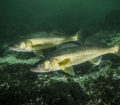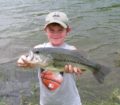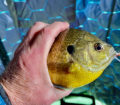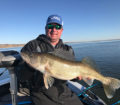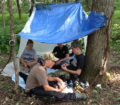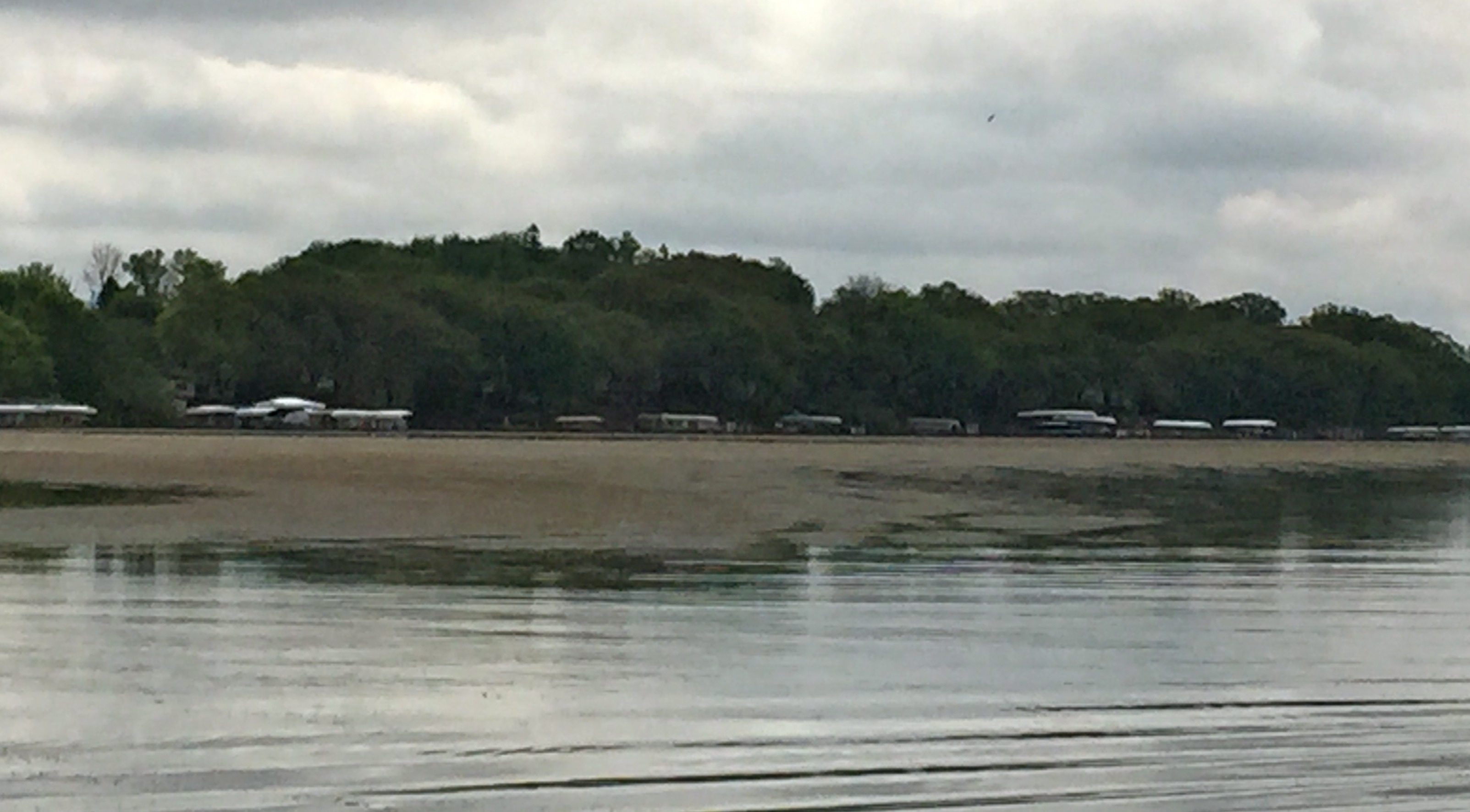By Steve Weisman
At approximately 5,700 acres, Big Spirit Lake in northwest Iowa is the largest natural lake in the state. It is one of the go-to recreational and fishing lakes for both local residents and visitors alike. A majority of the lake’s shoreline is under private ownership, and much of the shoreline has been altered to make room for docks and hoists, and much of the natural shoreline of aquatic vegetation and stands of bulrushes have, unfortunately, disappeared.
That is why back in 2006, there was a huge push to protect the nearly 5,000 feet of bulrushes in Angler’s Bay (from the Hale’s Slough Boat Ramp to the Sandbar Beach Resort property) on the northeast side of Big Spirit Lake. Since the late 1800s, 3,500 feet of this shoreline had been privately owned, and in 2004, the owners proposed to the county the development of a lakeshore residential subdivision. That brought forth a host of individuals, businesses and organizations hoping to find a way to “save the bulrushes.” Finally, through the efforts of the Iowa Natural Heritage Foundation (INHF) along with the assistance of local and non-local donors and public and private funds, in late 2005, a deal was reached to forever save the ecological integrity of this shoreline. Not long after, the INHF turned ownership over to the Iowa Department of Natural Resources to protect and implement a comprehensive conservation plan.
What I find amazing about Angler’s Bay is its importance to the scientific world. Several studies dating back as far as 1897 have studied this area. Through this work, experts have identified 54 aquatic plants species and countless fish, amphibians, birds, mammals, and insects making it one of the most diverse and ecologically important areas in the entire state. Yes, it was incredibly important to save that property, but it is also important to know that this diversity has been declining steadily since those first surveys. As of the most recent study, only 28 aquatic plant species were identified.
The trend from these studies shows that protecting this area takes more than just putting it in public ownership. There is a lot of restoration that needs to happen to make it healthy again. At the time the property was saved, it was obvious that steps needed to be taken to not only protect Angler’s Bay but to also help bring back some of the aquatic plant species that were disappearing disappeared.
So, the first step after the purchase was to protect the area from runoff. As you take the highway along the east side of the lake, you can see the results of the first stage, which was to restore nearly 100 acres of tall grass prairie and several wetland basins. So, from Hales Slough to the south and all the way to the Sandbar Resort property line to the north, it is a mix of tall grass prairie and wetlands.
Time for the next step
A lot of planning has gone into the next phase. The “save the bulrushes” campaign set the stage, but now it’s time to protect and restore health to this 5,000-foot shoreline. This near shore area, often referred to as the wet meadow, is probably the most sensitive part of the shoreline. Historically, the shoreline above Angler’s Bay would have been dominated by tall grass prairie and in some locations low density trees. In the absence of active management, however, invasive plants and trees have invaded overtaken the shoreline over the past 150 years. As a result, many native species on the historic aquatic plant list have been reduced or even totally pushed out due to shading.
Right away, however, many people become concerned when cutting down trees on public lands is suggested. Contrary to popular belief, in the right place at the right time, strategic tree removal is a good choice. I wrote a story about this back in 2015 for the local newspapers and addressed the concern people had about getting rid of the trees. I used a quote from Doug Harr, former head of the Iowa DNR’s Wildlife Diversity Program and current President of the Iowa Audubon Society to help explain cutting down trees. Harr’s initial statement is this, and it certainly makes sense: “Trees do belong in some places, and they certainly don’t belong in others.” He talked about fragmentation. “It is our responsibility to restore grasslands invaded by trees back to as pure a grassland/ prairie as possible, and also to plant trees in areas of historic woodlands that have been cleared. Then the native wildlife and bird populations of each different habitat type are much more likely to thrive. It’s a message we simply have to get out to all Iowans.”
At that time, I also talked to John H. Wills, Dickinson County Clean Water Alliance Coordinator, who concurred with Harr. “While seeing trees removed may be unsettling at first,” Wills said, “extensive scientific research and data support the long-term benefits to restoration of a natural habitat that once covered hundreds of thousands of acres in Iowa but is now extremely rare.”
Fast forward to 2021. Mark Gulick, Regional Wildlife Supervisor states, “The Angler’s Bay Shoreline Restoration project essentially involves converting the existing low-quality woodland area, dominated by invasive trees and herbaceous plants, back to its pre-settlement condition of an oak savannah. An Oak Savannah, consisting of low density, fire-tolerant trees and prairie grasses and flowers, is one of the most endangered ecosystems on earth.”
Gulick goes on to say, “This doesn’t mean cutting down all the trees. It involves aggressive forest management to remove non-native and invasive plants while leaving native trees and even planting new ones. This opens the canopy allowing prairie to be reestablished and takes the pressure off the sensitive shoreline.”
Knowing that the next step in the Angler’s Bay Shoreline Restoration would take place in early 2021, a public meeting was held on Wednesday, October 7, to keep the public informed of the plan and the next steps. Press releases explaining the next steps were also provided to all local media. Then in early November, Mike Hawkins, DNR Fisheries Biologist, prepared a 17-minute video presentation that does an excellent job of providing an overview of the Angler’s Bay Shoreline Restoration project. Hawkins shares several slides that give a visual historic perspective, present day issues, project goals and the anticipated timeline for the project. This video is still available and can be accessed on the Spirit Lake Protection’s Facebook page or you can just search “Iowa DNR Anglers Bay Shoreline Restoration” project on YouTube.
The process
The long, dry fall allowed DNR personnel to begin the arduous task of cleaning up much of the loose material and deadfalls making tree removal easier for the contracted professional tree removal company. As early as February 15, that company will begin tree removal. Trees will be cut flush with the ground to allow the site to be mowed as the prairie is established and invasive species are controlled.
The contract requires all work to be completed while the ground is frozen. Erosion-control methods such as silt fences, straw waddles, etc. will be used as an extra precaution to prevent soil from entering the lake during and after tree-removal activities. All of this work will be closely supervised to ensure site protection and appropriate procedures are followed.
Green ash, which is susceptible to the Emerald ash borer, makes up nearly 95 percent of the existing stand. All of these trees, along with other invasives like buckthorn, elm, boxelder and others will be removed. Any logs that can be utilize will be hauled off site, while small trees and treetops will be piled on site to be burned at a later date.
Native trees such as bur oak, hackberry, and basswood are sprinkled throughout the project site. These along with the largest of the cottonwood trees will be left standing as the site begins to resemble a savanna. In the coming years, this stand will be made complete by planting more native trees where needed.
After the tree removal
Once the tree removal is completed, there will continue to be ongoing work. Next will come the native prairie restoration along with continued efforts to control brush and weed regrowth. There will also be strategic plantings of native tree plantings including oak trees along with other native species such as walnut, hickory, hackberry and basswood. Obviously, as an ongoing project, the area will always require proper management to keep invasives out and the native species healthy. Native aquatic species will also be reintroduced to bring back the historic diversity to Angler’s Bay
To me, this is an exciting time to make the Angler’s Bay Plan a reality! It’s just the first step, but it will ultimately take us to an ecosystem, consisting of native trees maintained in a condition (about 50 percent open canopy) that will not only favor the sun-loving nearshore aquatic and prairie plants beneath them, but it will also provide for a large and functioning rare habitat type that is favored by many common wildlife species and required by other species whose populations are in decline.
To take a look at a similar Oak Savannah project that is ongoing, you can check out the east and south shorelines of Elk Lake in Clay County.
So, if you see a lot of trees coming down from Hales Slough to the Sandbar Resort property line, don’t be concerned. It’s just the next step in “saving the bulrushes of Angler’s Bay!”
A joint team of fisheries, wildlife and forestry professionals with guidance from the Iowa Natural Heritage Foundation, Dickinson Clean Water Alliance, and Spirit Lake Protective Association developed the Angler’s Bay Aquatic Habitat and Forest Stewardship Plan. The Dickinson County Water Quality Commission, Dickinson County Soil and Water Conservation District and the Iowa Lake Restoration Program are helping to fund this project.
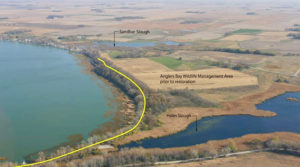
(Photo courtesy of Iowa DNR) Aerial view of the Angler’s Bay prior to restoration.
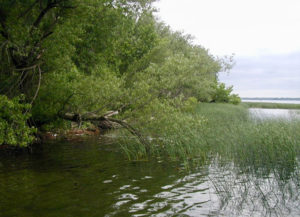
(Photo courtesy of Iowa DNR) Invasive trees and plants encroaching on the shoreline, affecting the shoreline bulrushes.
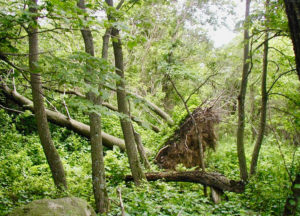
(Photo courtesy of Iowa DNR) Thick undergrowth and stands of invasive trees have choked out most native stands.

(Photo courtesy of Iowa DNR) Much of the preparation work has been completed by clearing out the dead materials and deadfalls prior to cleaning out the invasive trees and shrubs.
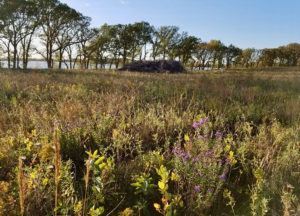
(Photo courtesy of Iowa DNR) This is a sample Oak Savanna project on the east and south shorelines of Elk Lake in Clay County.

